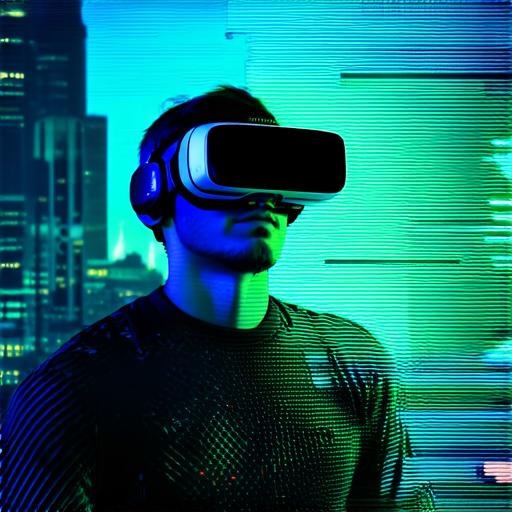Virtual reality (VR) is a technology that allows users to experience a simulated environment as if it were real. In this article, we will explore how VR works and what makes it so immersive.
Hardware Components
The first step in creating a virtual reality experience is to have the necessary hardware components. These include a headset, sensors, controllers, and a computer or gaming console to power the experience.
The headset is worn by the user and typically consists of two screens that are placed at different angles to create a stereoscopic effect. This gives the user the impression of depth and movement when looking around in the virtual world. The sensors track the movement of the user’s head and adjust the image accordingly, allowing for a more immersive experience.
Controllers allow users to interact with the virtual environment by simulating hand movements. These can be used to grab objects, point at things, or perform other actions in the virtual world.
Software and Content Creation
The software that powers VR experiences is called a game engine or middleware. This software is responsible for rendering the 3D graphics and physics simulation of the virtual environment.
Content creation for VR involves designing and building 3D models, environments, and characters that will be used in the virtual world. This can be done using specialized software such as Unity, Unreal Engine, or Blender.
Tracking and Motion Capture
One of the key elements of virtual reality is motion tracking. This technology allows the VR system to track the movement of the user’s body and translate it into movements in the virtual world.
Motion capture involves using sensors to record the movement of an object, such as a person’s body, and then using that data to animate a 3D model in the virtual world. This is often used to create realistic character movements in VR games.
Immersive Experience
The combination of the hardware components, software, and content creation all work together to create an immersive experience for the user. By wearing the headset and interacting with the virtual environment using the controllers, users can feel as if they are truly inside the virtual world.
In addition, VR experiences can be enhanced by other technologies such as haptic feedback, which allows users to feel physical sensations in the virtual world. This can include vibrations from the controller or special suits that simulate touch and movement.
Summary
Virtual reality is a complex technology that combines hardware, software, and content creation to create an immersive experience for the user. By understanding how VR works, you can appreciate the technology and its potential applications in fields such as gaming, education, and training.

